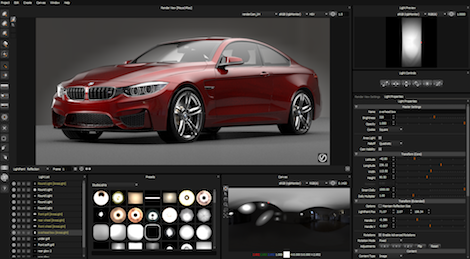
If you’re at the top of your rendering and visualisation game, chances are you’ve come across HDR Light Studio – one of the finest solutions out there for creating and editing your own HDR environments for today’s rendering systems. Well, the good news is that there’s a new release. The team has dropped the numerical release and is instead going with codenames – so welcome, HDR Light Studio Carbon.
Perhaps the biggest update for this release flips the existing idea of having a rendered built into the application to guess what your edits will look like in the final render, instead bringing your renderer of choice into the HDR Light Studio environment. At present, this works with V-Ray, Corona, Arnold, Redshift if you’re using 3ds Max, while Maya uses can use the V-Ray, Arnold, Octane, Redshift or RenderMan rendered directly. This means you’ll have a much better understanding of how your scene will look when you switch to your workhorse rendering system, rather than relying on an approximation.
Another key update is improvements in speed to area lights. According to the press release, “Area Lights are now created, adjusted and soloed instantly – even when loading huge 3D scenes. This inbuilt renderer is the perfect pre-vis lighting tool when IPR updates are too slow in the connected 3D renderer.” There’s been work done on the integration into both 3ds max and Maya – now you simply press Start and begin image based lighting set-up. Bringing your whole scene into HDR LIght Studio is also much more efficient – press Play in the host application and the scene will automatically importing.
There are a bunch of other updates, but this video will cover all the big stuff for existing users. If you like what you see, it’s already available for existing subscribers, but new users can jump on board for £295 / €395 / $445 a year – there’s also a 15 day trial too.






